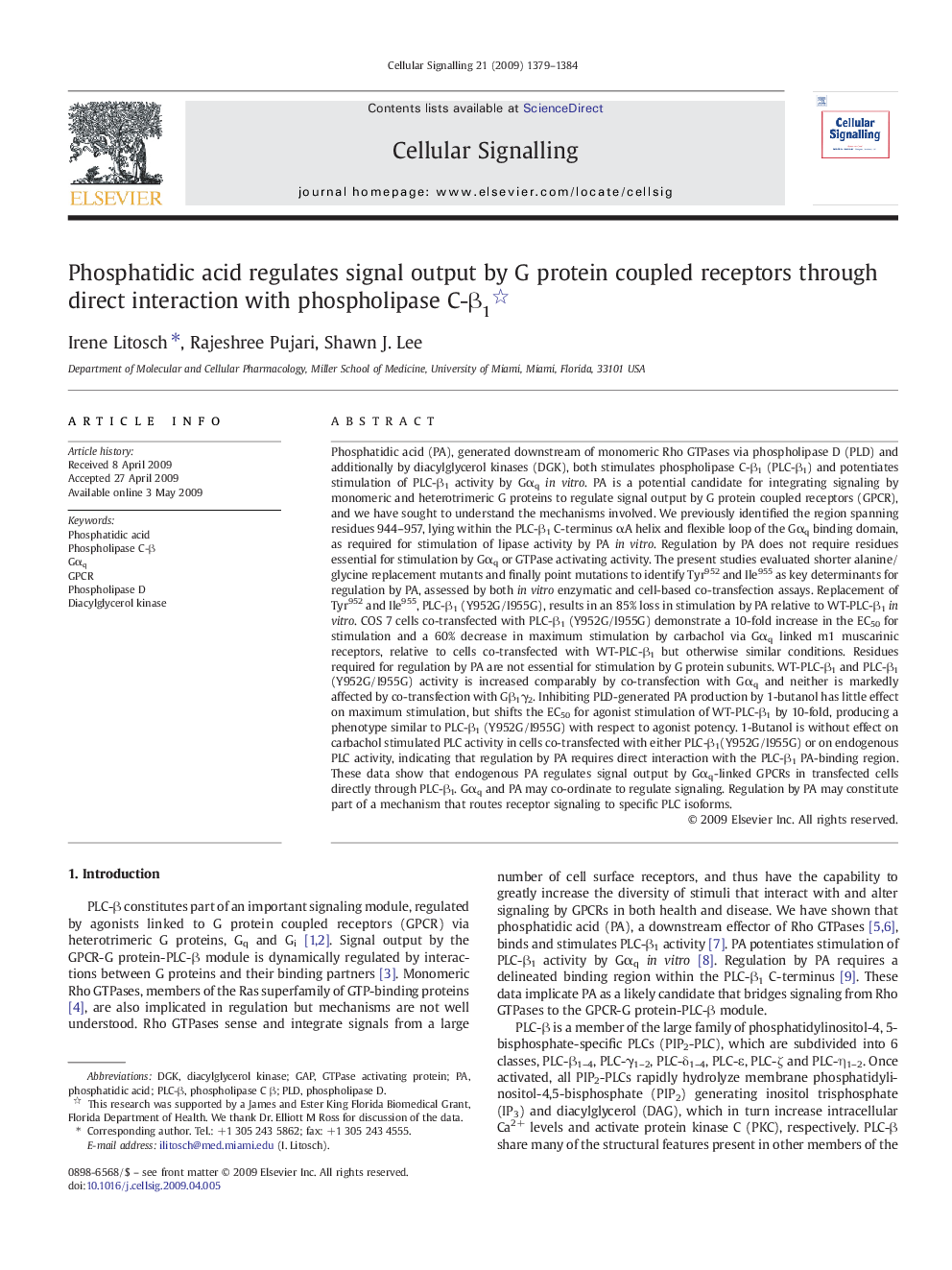| کد مقاله | کد نشریه | سال انتشار | مقاله انگلیسی | نسخه تمام متن |
|---|---|---|---|---|
| 1963883 | 1058513 | 2009 | 6 صفحه PDF | دانلود رایگان |

Phosphatidic acid (PA), generated downstream of monomeric Rho GTPases via phospholipase D (PLD) and additionally by diacylglycerol kinases (DGK), both stimulates phospholipase C-β1 (PLC-β1) and potentiates stimulation of PLC-β1 activity by Gαqin vitro. PA is a potential candidate for integrating signaling by monomeric and heterotrimeric G proteins to regulate signal output by G protein coupled receptors (GPCR), and we have sought to understand the mechanisms involved. We previously identified the region spanning residues 944–957, lying within the PLC-β1 C-terminus αA helix and flexible loop of the Gαq binding domain, as required for stimulation of lipase activity by PA in vitro. Regulation by PA does not require residues essential for stimulation by Gαq or GTPase activating activity. The present studies evaluated shorter alanine/glycine replacement mutants and finally point mutations to identify Tyr952 and Ile955 as key determinants for regulation by PA, assessed by both in vitro enzymatic and cell-based co-transfection assays. Replacement of Tyr952 and Ile955, PLC-β1 (Y952G/I955G), results in an 85% loss in stimulation by PA relative to WT-PLC-β1in vitro. COS 7 cells co-transfected with PLC-β1 (Y952G/I955G) demonstrate a 10-fold increase in the EC50 for stimulation and a 60% decrease in maximum stimulation by carbachol via Gαq linked m1 muscarinic receptors, relative to cells co-transfected with WT-PLC-β1 but otherwise similar conditions. Residues required for regulation by PA are not essential for stimulation by G protein subunits. WT-PLC-β1 and PLC-β1(Y952G/I955G) activity is increased comparably by co-transfection with Gαq and neither is markedly affected by co-transfection with Gβ1γ2. Inhibiting PLD-generated PA production by 1-butanol has little effect on maximum stimulation, but shifts the EC50 for agonist stimulation of WT-PLC-β1 by 10-fold, producing a phenotype similar to PLC-β1 (Y952G/I955G) with respect to agonist potency. 1-Butanol is without effect on carbachol stimulated PLC activity in cells co-transfected with either PLC-β1(Y952G/I955G) or on endogenous PLC activity, indicating that regulation by PA requires direct interaction with the PLC-β1 PA-binding region. These data show that endogenous PA regulates signal output by Gαq-linked GPCRs in transfected cells directly through PLC-β1. Gαq and PA may co-ordinate to regulate signaling. Regulation by PA may constitute part of a mechanism that routes receptor signaling to specific PLC isoforms.
Journal: Cellular Signalling - Volume 21, Issue 9, September 2009, Pages 1379–1384